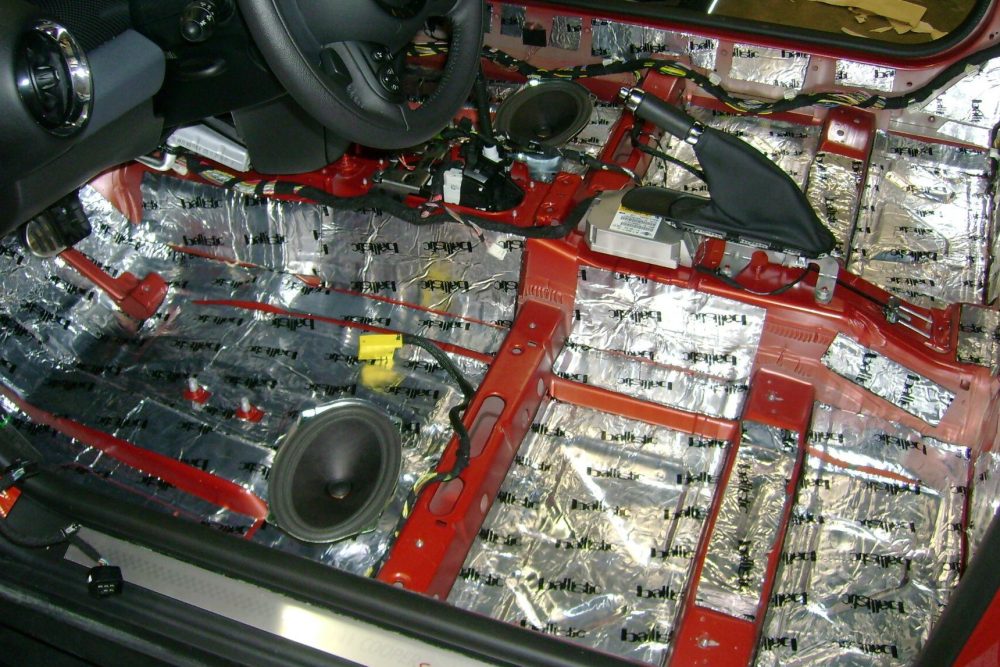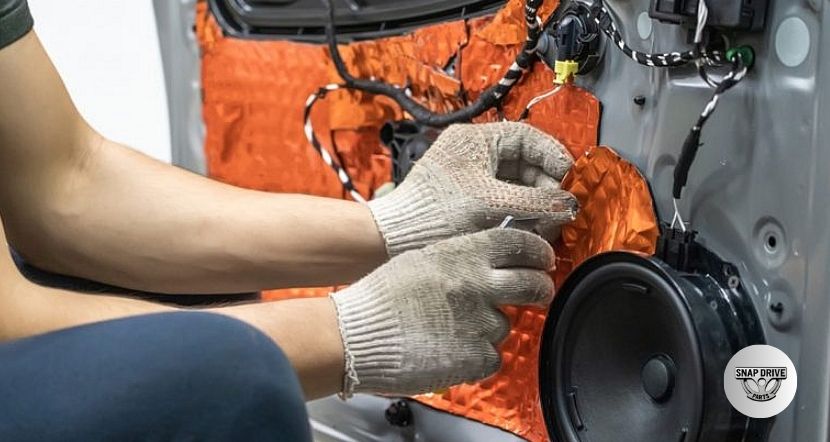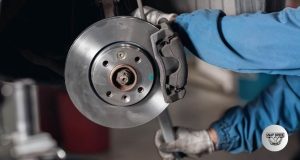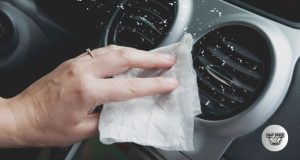Last Updated on October 16, 2025 by Aaron Blake
Have you ever wondered why some cars feel so quiet inside, even when the road outside is noisy? That peaceful silence doesn’t happen by chance—it’s all about car soundproofing.
Understanding how car soundproofing works can change the way you experience driving. Imagine enjoying your favorite music without crank up the volume, or having a calm conversation without shouting over traffic noise. You’ll discover the simple secrets behind making your ride quieter and more comfortable.
Ready to find out how your car can block out unwanted noise? Keep reading to unlock the mystery of car soundproofing.

Credit: www.youtube.com
Contents
Sources Of Car Noise
Cars produce many sounds while driving. These sounds come from different parts of the vehicle. Knowing where noise starts helps reduce it effectively.
This guide explains common sources of car noise. Each source creates unique sounds that affect ride comfort.
Engine And Exhaust Sounds
The engine makes noise when it runs. Exhaust systems release gas, creating sound too. Loud engines and exhaust pipes cause much noise inside the car.
Road And Tire Noise
Tires touch the road and create sound. Rough or gravel roads increase noise. Tire type and pressure also change how loud the ride feels.
- Hard tires produce more noise
- Low tire pressure increases road noise
- Uneven road surfaces cause extra sound
- Worn tires can be louder than new ones
Wind And Aerodynamic Noise
Wind flows around the car when it moves. This flow causes air to hit windows and mirrors. The faster the car, the more wind noise you hear.
| Source | Cause | Effect |
|---|---|---|
| Side Mirrors | Air hits mirror edges | Whistling or humming noise |
| Windows | Gaps or seals let air in | Rattling or whooshing sounds |
| Roof Racks | Block airflow | Increased wind resistance and noise |
Interior Vibrations
Vibrations from the engine and road pass to the car body. These vibrations cause panels and parts inside to shake. This shaking makes noise in the cabin.
Common vibration sources include:
- Loose dashboard parts
- Worn door seals
- Unbalanced wheels
- Engine mounts
Materials For Soundproofing
Car soundproofing uses special materials to reduce noise inside the vehicle. These materials block, absorb, or dampen sound waves. Choosing the right material helps make the car quieter and more comfortable.
Each soundproofing material works differently. Some add weight, while others trap sound or reduce vibrations. Understanding these materials helps you pick the best ones for your car.
Mass Loaded Vinyl
Mass Loaded Vinyl (MLV) is a dense, heavy material. It blocks sound by adding mass to car panels. MLV is thin but very effective at stopping noise from passing through walls and doors.
Acoustic Foam
Acoustic foam absorbs sound waves inside the car. It traps echoes and reduces reverberations. Foam is soft and lightweight, making it easy to fit in small spaces.
- Open-cell structure traps air and sound
- Reduces mid and high-frequency noise
- Improves sound quality inside the car
- Commonly used in door panels and headliners
Sound Deadening Mats
Sound deadening mats reduce vibrations and road noise. They stick to metal surfaces and absorb energy from sound waves. These mats add weight and stop panels from rattling.
| Type | Material | Function |
| Butyl Mats | Butyl Rubber | Vibration damping, easy to apply |
| Asphalt Mats | Asphalt-based | Heavy damping, adds mass |
| Foam Mats | Polyethylene Foam | Sound absorption, lightweight |
Spray-on Insulation
Spray-on insulation covers hard-to-reach areas. It forms a seamless layer that reduces noise and vibration. The spray dries fast and sticks tightly to surfaces.
- Fills gaps and corners easily
- Prevents air leaks that carry sound
- Lightweight and thin application
- Resists moisture and heat
Installation Techniques
Car soundproofing reduces noise inside the vehicle. Proper installation is key for good results. Different parts of the car need special treatments.
This guide covers common methods used to install soundproofing materials. It explains how to apply them on doors, floors, roofs, and windows.
Door And Panel Treatment
Doors and panels are major points where noise enters the car. Installing soundproof mats or foam inside these areas blocks sound waves.
- Remove the door panel carefully to avoid damage.
- Clean the surface to ensure adhesion.
- Apply butyl mats on metal parts for vibration damping.
- Add foam or fiber mats on inner panels for sound absorption.
- Reinstall the panel securely after treatment.
Floor And Roof Insulation
Floors and roofs carry road and wind noise into the cabin. Using thick insulation materials can reduce this sound.
| Area | Material Type | Purpose |
| Floor | Mass loaded vinyl | Blocks vibrations and noise |
| Floor | Closed-cell foam | Absorbs sound waves |
| Roof | Sound deadening mats | Reduces rattling and wind noise |
| Roof | Thermal insulation | Improves temperature control |
Sealing Gaps And Cracks
Gaps and cracks let noise into the car cabin. Sealing them stops sound leaks and improves insulation.
Use soundproof sealants and foam to fill spaces around doors, panels, and joints. This blocks air and sound flow.
Window And Weatherstripping
Windows are common noise entry points. Weatherstripping adds a tight seal to keep noise out.
- Inspect old weatherstripping for cracks or wear.
- Remove damaged strips carefully.
- Clean the window frame surface.
- Install new weatherstripping with firm pressure.
- Test for gaps by closing windows and listening for outside noise.

Credit: autotrimseattle.com
Benefits Of Soundproofing
Car soundproofing reduces noise from outside and inside the vehicle. It creates a quieter cabin that makes every ride more pleasant.
Soundproofing helps drivers and passengers enjoy a calm environment. This makes driving safer and more comfortable.
Enhanced Driving Comfort
Soundproofing lowers road, engine, and wind noise inside the car. This reduces distractions and helps drivers focus better.
A quieter cabin allows passengers to relax and talk easily. It improves the overall travel experience for everyone inside.
Improved Audio Quality
With soundproofing, car audio sounds clearer and richer. Outside noise no longer interferes with music or phone calls.
- Better bass and treble balance
- Less background noise
- Clearer voice from phone calls
- Improved speaker performance
Reduced Driver Fatigue
Constant noise can cause stress and tiredness while driving. Soundproofing lowers noise levels, which helps drivers stay alert and less tired.
Drivers feel more comfortable and less stressed on long trips. This can lead to safer driving and fewer accidents.
Increased Vehicle Value
Soundproofed cars often have higher resale value. Buyers see a quiet cabin as a sign of quality and care.
| Benefit | Effect on Vehicle Value |
| Quieter Cabin | More attractive to buyers |
| Improved Comfort | Better driving experience |
| Enhanced Audio | Higher perceived quality |
| Less Wear and Tear | Longer vehicle life |

Credit: www.youtube.com
Frequently Asked Questions
What Materials Are Used In Car Soundproofing?
Car soundproofing uses foam, mats, and barriers to block and absorb noise inside the vehicle.
How Does Soundproofing Reduce Road Noise In Cars?
It stops sound waves from entering by sealing gaps and absorbing vibrations from the road.
Can Soundproofing Improve Car Audio Quality?
Yes, it lowers outside noise, making music sound clearer and more enjoyable inside the car.
Is Professional Installation Necessary For Car Soundproofing?
Professional help ensures proper material placement for best noise reduction and lasting results.
How Long Does Car Soundproofing Last?
Quality soundproofing materials typically last for many years without losing effectiveness or degrading.
Conclusion
Car soundproofing reduces noise inside your vehicle effectively. It blocks outside sounds and vibrations for a quiet ride. Different materials absorb or block noise in key areas. This improves comfort and helps you focus while driving. Investing in soundproofing makes trips more peaceful and enjoyable.
Consider it a smart choice for a better car experience.





